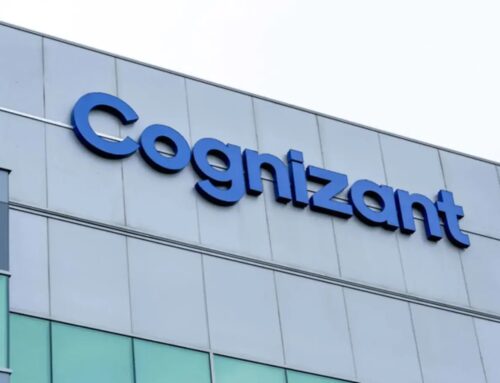
Critical SAP S/4HANA Vulnerability Actively Exploited to Fully Compromise Your SAP System
Urgent Warning: Critical SAP S/4HANA Vulnerability Under Active Attack
Organizations worldwide relying on SAP S/4HANA are facing an immediate and severe cybersecurity threat. A critical vulnerability, CVE-2025-42957, with a staggering CVSS score of 9.9 out of 10, is actively being exploited in the wild. This vulnerability allows attackers with even low-level user access to gain full control over affected SAP systems, posing an existential risk to business operations, sensitive data, and compliance.
The urgency of this situation cannot be overstated. Compromise of an SAP S/4HANA system can lead to widespread data theft, financial manipulation, supply chain disruption, and significant reputational damage. This analysis delves into the specifics of this critical flaw, its potential impact, and the essential steps organizations must take to protect their vital SAP environments.
Understanding the Threat: CVE-2025-42957 in Detail
The vulnerability, tracked as CVE-2025-42957, affects all releases of SAP S/4HANA, both on-premise and potentially cloud configurations depending on the specific architecture and customizations. Its high CVSS score reflects the ease of exploitation and the devastating impact if successful.
Key characteristics of this vulnerability include:
- Low-Privilege Access: Attackers require only low-level user credentials to initiate the exploit. This significantly broadens the attack surface, as even a compromised basic user account can lead to a full system takeover.
- Complete System Control: Successful exploitation grants attackers unauthorized root access or equivalent administrative privileges, enabling them to manipulate data, inject malicious code, exfiltrate sensitive information, and disrupt core business processes.
- Actively Exploited: The most alarming aspect is that this flaw is not theoretical; it is currently being used in active attacks. This means organizations running vulnerable S/4HANA systems are directly in the crosshairs of malicious actors.
- Pervasive Impact: Given SAP S/4HANA’s role as the digital core for countless enterprises, a compromise can have cascading effects across an organization’s entire IT landscape and critical business functions.
Potential Impact of an SAP S/4HANA Compromise
A full compromise of an SAP S/4HANA system via CVE-2025-42957 can lead to catastrophic consequences, including but not limited to:
- Data Exfiltration: Access to highly sensitive financial data, intellectual property, customer information, and HR records.
- Financial Fraud: Manipulation of financial transactions, supply chain processes, and inventory records, leading to direct monetary loss.
- Operational Disruption: Ability to shut down critical business processes, halt production, or disrupt supply chains, resulting in significant downtime and revenue loss.
- Reputational Damage: Loss of customer trust, negative press, and long-term harm to brand image.
- Regulatory Penalties: Non-compliance with data privacy regulations (e.g., GDPR, CCPA) due to data breaches, leading to hefty fines.
- Ransomware Attacks: SAP systems can become a prime target for ransomware, encrypting critical business data and demanding large payments for decryption.
Remediation Actions: Immediate Steps for Protection
Given the active exploitation of CVE-2025-42957, organizations must act decisively and immediately. The following actions are critical:
- Patching: The absolute priority is to apply the security patches released by SAP for CVE-2025-42957. Consult SAP’s official security notes and support portal for the relevant updates for your specific S/4HANA release. Implement these patches following your organization’s change management protocols, prioritizing critical systems.
- System Auditing: Conduct an immediate and thorough audit of your SAP S/4HANA systems for any signs of compromise. Look for unusual user activity, unauthorized configuration changes, unexpected processes, or suspicious network connections.
- Vulnerability Scanning: Utilize specialized SAP security scanning tools to identify the presence of CVE-2025-42957 and other known vulnerabilities within your SAP landscape.
- Access Review: Revisit and strengthen all user access controls. Implement the principle of least privilege, ensuring users only have the minimum necessary permissions. Review and disable any dormant or unnecessary user accounts.
- Network Segmentation: Ensure strict network segmentation for your SAP systems, isolating them from less secure parts of the network to limit lateral movement in case of a breach. Implement robust firewall rules.
- Security Monitoring: Enhance logging and monitoring for your SAP S/4HANA environments. Implement security information and event management (SIEM) solutions to detect anomalous activities and potential exploitation attempts in real-time.
- Incident Response Plan: Update and test your incident response plan specifically for SAP system compromises. Ensure your teams are prepared to identify, contain, eradicate, and recover from an attack affecting your core business systems.
Essential Tools for SAP Security and Vulnerability Management
Effective management of SAP security, especially in light of critical vulnerabilities like CVE-2025-42957, requires specialized tools. Here are some categories and examples:
| Tool Category | Purpose | Example Tools / Approaches |
|---|---|---|
| Vulnerability Management Platforms | Identifies and manages vulnerabilities across IT infrastructure, including SAP. | Onapsis, SecurityBridge, Fortra (Pathlock), SAP Solution Manager |
| SAP Security Assessment Tools | Specialized tools for auditing SAP configurations, user roles, and system vulnerabilities. | Onapsis Platform, Xiting Authorizations Management Suite (XAMS), Fortra (Pathlock) |
| SIEM Solutions with SAP Connectors | Aggregates and analyzes security logs from SAP systems for real-time threat detection. | Splunk, IBM QRadar, Microsoft Sentinel (with SAP connectors) |
| Access Governance & GRC Tools | Manages user provisioning, role design, segregation of duties (SoD), and compliance within SAP. | SAP Access Control (part of SAP GRC), SailPoint, Okta (for identity management) |
Conclusion: Prioritizing SAP Security in a Threat Landscape
The active exploitation of CVE-2025-42957 serves as a stark reminder of the persistent and evolving threats against critical enterprise applications. For organizations running SAP S/4HANA, patching this vulnerability is not merely a recommendation; it is an immediate imperative to prevent full system compromise. Beyond this specific patch, a holistic and proactive approach to SAP security, encompassing regular vulnerability assessments, robust access controls, continuous monitoring, and a well-defined incident response strategy, is essential to safeguarding the digital core of modern businesses.





